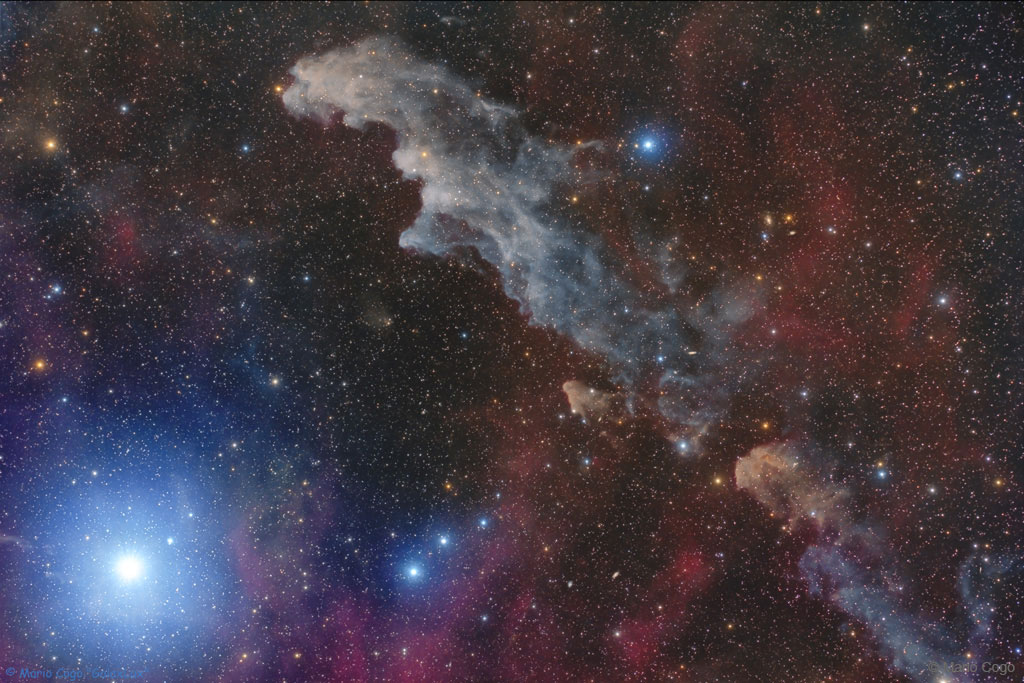Overview
- Object: Reflection nebula
- Constellation: Eridanus
- Right ascension: 05h 02m 00.00s
- Declination: −07° 54′ 00″
- Apparent size: 3 x 1 degrees
- Apparent magnitude: 13
- Distance: 1,000 light years
- Designations: Witch Head Nebula, Cederblad 41, IC 2118, NGC 1909

Witch Head Nebula: General Facts
The Witch Head Nebula is a very faint reflection nebula in the constellation of Eridanus, located around 1,000 light years away from Earth. It has an apparent magnitude of 13 and is 3 x 1 degrees in size. It is also known by its official name, IC 2118, and is designated NGC 1909 in the New General Catalogue. The nebula is not visible to the naked eye.
The nebula was given its name because it looks like a profile of a wicked witch. It is an ancient supernova remnant or a gas cloud illuminated by the nearby blue supergiant star Rigel, the brightest star in constellation Orion and the seventh brightest star in the sky.
The Witch Head Nebula is located 2.6 degrees to the west of Rigel, which has an absolute magnitude of -7.92 and a luminosity about 120,000 times that of the Sun.
The blue colour of the Witch Head Nebula is in part a result of the dust particles within the nebula reflecting blue light more efficiently than red. A similar process is responsible for making our sky appear blue.
There have been radio observations of the nebula that have revealed that parts of it show significant carbon monoxide emission. This indicates that the nebula contains molecular clouds where star forming activity occurs.
Astronomical Discoveries
Astronomers have also detected candidates for pre-main sequence stars, which are very young stars just beginning their lives, embedded deep within the nebula, along with some T Tauri stars. T Tauri variables are pre-main sequence stars with a mass less than two times that of the Sun, yet more luminous than main sequence stars with the same mass because they have larger radius. These stars are usually found near molecular clouds.
These molecular clouds are believed to be associated with the massive stars belonging to the Orion OB1 association, on the outer edge of the Orion-Eridanus bubble. The Orion-Eridanus bubble is an enormous supershell of molecular hydrogen blown by members of the Orion OB1 group. The supershell is gradually expanding, and is the site of starburst activity.
New observations in infrared wavelengths led astronomers to discover a half dozen new stars within the nebula. The nebula emits in infrared because its newly formed stars heat the surrounding gas and dust.
The Witch Head nebula used in the television series Andromeda as the site of a major space battle that sent civilization into an era of chaos.
History
The Witch Head Nebula was discovered through astrophotography by the German astronomer Max Wolf in 1909.
Image Sources:
- Witch Head Nebula Image Credit & Copyright: Mario Cogo (Galax Lux) – https://apod.nasa.gov/apod/image/1801/Witchhead_Cogo_1024.jpg